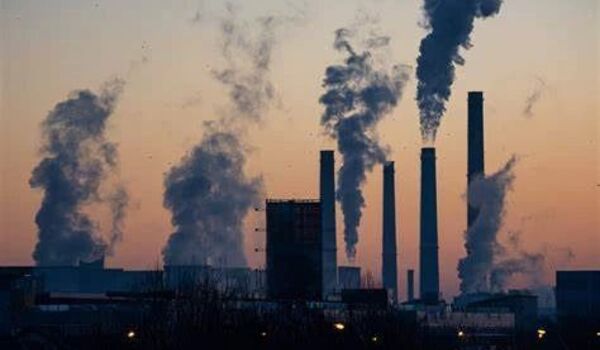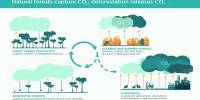Carbon monoxide emissions from industrial activity are harmful to human health and a reliable measure of overall air pollution levels. Many countries want to minimize their emissions, but they can’t regulate air movements from other locations. A new study from the University of Illinois at Urbana-Champaign examines global air pollution fluxes and their relationship to economic activity in the global supply chain.
“Our study is unique in combining atmospheric transport of air pollution with supply chain analysis as it tells us where the pollution is coming from and who is ultimately responsible for it,” said lead author Sandy Dall’erba, professor in the Department of Agricultural and Consumer Economics (ACE) and director of the Center for Climate, Regional, Environmental and Trade Economics (CREATE), both part of the College of Agricultural, Consumer and Environmental Sciences (ACES) at Illinois.
“There is a clear link between a country’s production level and the amount of air pollution it emits. However, manufacturing may be driven by demand from consumers in other countries. We utilize supply chain analysis to quantify the relationships between production and consumption. This allows us to better understand how production in one country relates to home and overseas demand,” he noted.
Our findings demonstrate that pollution is a worldwide issue that cannot be addressed by individual countries. The world is interconnected, and we are all in this together. Pollution in one country can be caused by economic activities in surrounding countries, which are influenced by who buys the items produced in that country.
Yilan Xu
The researchers used models constructed by Nicole RIemer, professor in the Department of Climate, Meteorology, and Atmospheric Sciences, College of Liberal Arts and Sciences at Illinois, to track the passage of pollutants through the atmosphere in order to better understand the flow of emissions. For analysis, they separated the world into five sections: the United States, Europe, China, South Korea, and the rest of the world. South Korea is positioned downwind of China and exemplifies how a tiny country can be impacted by pollution from a much larger upwind neighbor.
“Over recent years, South Korea has taken several measures to reduce its own pollution, yet it has experienced worsening air quality. Why? The answer is to be found in its upwind neighbor, China. Yet, a large amount of the goods manufactured in China are destined for foreign consumers in the U.S. and in Europe, among other places. As such, who is to be blamed for the increase in air pollution in South Korea? That is the challenge we embarked on with this study,” Dall’erba stated.
The researchers found the amount of carbon monoxide emissions coming from China to South Korea increased from 30 teragrams (Tg) in 1990 to 42 Tg in 2014.

“To put these numbers in perspective, 5 Tg of carbon monoxide corresponds to the emissions from all of the cars in the U.S. — roughly 274 million — each driving 13,500 miles per year. So it’s definitely not a small increase. We conclude that South Korea has, in effect, lost control of their own air quality,” Dall’erba explained.
Dall’erba and colleagues used structural decomposition analysis to determine the economic drivers of carbon monoxide emissions in the five research locations. They discovered that, while China’s technological procedures for reducing pollution have improved, overall carbon monoxide emissions have increased as the country’s production has increased.
The researchers then sought to pinpoint the source of the increasing manufacturing demand. In China, some of the increase can be ascribed to demand from the United States and Europe, but it is mostly driven by Chinese households. Between 1990 and 2014, China’s population rose significantly, and the country became wealthier, resulting in increased spending, according to Dall’erba.
“Our findings demonstrate that pollution is a worldwide issue that cannot be addressed by individual countries. The world is interconnected, and we are all in this together,” said co-author Yilan Xu, an associate professor at ACE. “Pollution in one country can be caused by economic activities in surrounding countries, which are influenced by who buys the items produced in that country. Pollution released anywhere in the world will have global impacts to varied degrees.”
Dall’erba, Riemer, and Xu underline that everyone can help reduce emissions. Producers can adopt technological change; authorities can enact regulations or offer incentives; and consumers can make decisions that favor sustainable products.
















